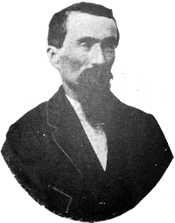March 19 — Early this morning we moved to the top of Fisher’s Hill, two miles above Strasburg, put our battery in a good commanding position, and awaited the advance of the enemy. We did not have to wait long before their advance guard appeared over Hupp’s Hill, nearly a mile north of Strasburg. Close behind their advance guard came their artillery and infantry, with steady tread, in solid column, and in overwhelming numbers. We had nothing but one battery and Ashby’s regiment of cavalry to oppose the mighty host that was approaching with floating banners.
They marched in one body till they arrived in town. Then one column flanked out on their right and advanced up the railroad and the other one came up the pike. When the one on the pike came within range of our guns we opened fire on the head of the column, which checked, mixed, and muddled them, and they retired, not quite in as good dress parade order as they had advanced just a moment before. But in the meantime the column that came up the railroad was about flanking our position, and about a mile northeast of us they put an eight-gun battery in position at almost the same altitude as ours.
When they opened fire on us with eight guns,— and from the clear-cut whiz of the shell they were all rifled pieces at that,— with an infantry column advancing on our left and one in front,— eight rifled guns playing on two,— we quickly arrived at the conclusion that discretion being the better part of valor, we would retire without delay. We fell back about a mile and took another position. The enemy advanced their battery, and we opened on them again. They returned our fire, doubling the amount. We fell back to another position and opened again, and they also repeated their tactics, and so we kept on falling back, firing at them from every hilltop for six miles.
When we left our last position it was nearly night, and we came to Narrow Passage, three miles south of Woodstock, and camped for the night. The Yanks fell back to Strasburg, which is twelve miles from Woodstock.
At some of our positions to-day the cannonading was what a raw recruit considers severe and unwholesome. Their ten-pound Parrott shells exploded all around us and threw the fragments in every direction with a whiz and a ring that made music—of its kind— in the air.
Our cavalry burned three railroad bridges to-day — Tumbling Run, Tom’s Brook, and Narrow Passage.



